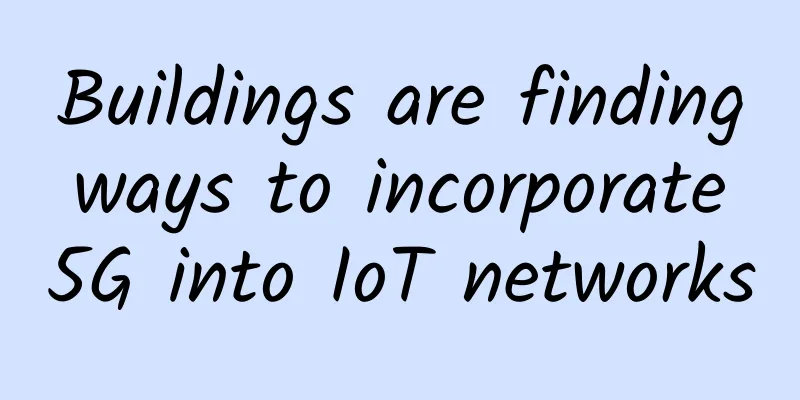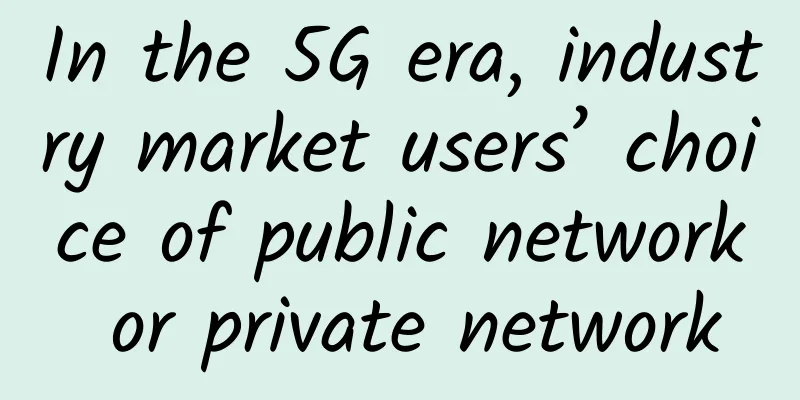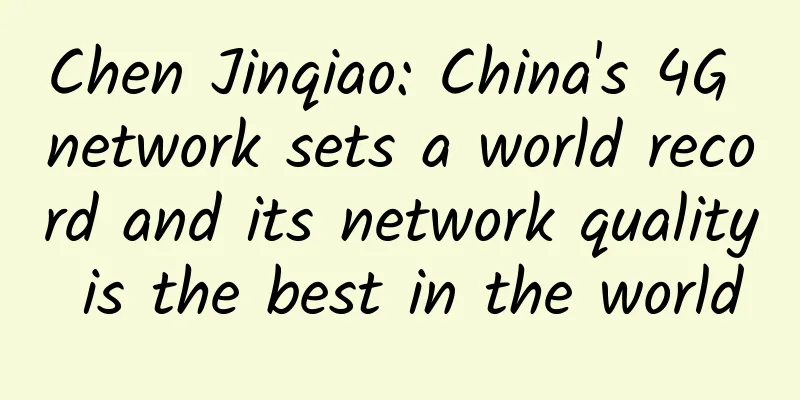Buildings are finding ways to incorporate 5G into IoT networks

|
The long-awaited 5G technology has finally arrived. In 2021, smartphone shipments are expected to account for more than 40% of global smartphone sales, and will grow to 69% by 2025. But in a business context, the value of consumer benefits pales in comparison to the promise of 5G. With it, 5G will also bring changes to our buildings. The advantages of buildings brought by smart technology have been recognized for quite some time. But just a decade ago, the prospect of retrofitting existing buildings with smart building technology seemed daunting. In addition to being prohibitively expensive, the sensors required to make buildings smart lacked at least four key enabling technologies that prevented most organizations from widely adopting them: battery life, computing power, connectivity options, and bandwidth. Over the past decade, the movement to retrofit older buildings has begun to gain momentum as more IoT devices designed specifically for buildings have become available. Many of the barriers to retrofitting facilities have also been removed, including, for all intents and purposes, unlimited computing power and storage in the cloud. This has greatly improved battery efficiency and lifespan, and has provided a variety of connectivity options, including Wi-Fi, cellular, ZigBee, and Bluetooth. As the 5G era approaches, it is important to understand the differences between this generation of wireless connectivity and how it will change the function of buildings. Limitations of 4G LTEOne of the most common and flexible types of device connectivity is cellular. This has long been the go-to choice when businesses want to connect their IoT devices to the cloud but don’t want to put those devices on the corporate network using cables or Wi-Fi. Until recently, 4G LTE was the global standard for premium mobile communications and provided the best option for connecting IoT devices to the cloud using cellular protocols. However, while 4G is far superior to 3G in terms of speed, it still imposes practical limits on the amount of data that can be transferred and the number of individual devices that can be connected. There are many use cases where 4G LTE networks can be overwhelmed, such as tracking the real-time movement of hundreds of passengers through a facility, location and performance reporting of thousands of devices, and real-time interaction of mobile devices with building systems and controls. If you’ve ever been to a large conference, sporting game, or concert, you’ve likely experienced the frustrating limitations on the number of smartphones that can successfully connect to a 4G network. Now, with the growth of a distributed, hybrid workforce, 75% believe that reliable broadband connectivity must improve significantly to adequately support hybrid work. 5G bandwidth makes the Internet of Things possible5G is expected to solve broadband access and coverage issues by significantly increasing the number of connected devices within buildings and could revolutionize and accelerate the smart building technology market in our post-pandemic workplaces. Unlike 4G, 5G is a unified platform designed to support 100x traffic growth while reducing end-to-end latency by 10x, enabling near-ubiquitous massive IoT for mobile phones and building systems, and fully connected smart buildings. Additionally, because 5G can natively support all spectrum types and bands, and optimize in real time which spectrum will be used, 5G also offers a wide range of deployment models (from traditional macro cells to hotspots), as well as new ways of interconnecting (such as device-to-device and multi-hop mesh). This means that as more organizations reassess their real estate needs and look for smart ways to adopt hybrid work models that match how the workplace is actually used, 5G can enable more widespread deployment of sensors that register and share data almost instantly from any node on the network - whether it's connecting an office's HVAC system to an employee badge or a home desk a company has purchased for remote employees. Applying 5G IoT in Commercial BuildingsHaving worked with cloud and desktop technologies for over 20 years, especially those created for the construction industry, I know all too well that migrating to a new software platform can be a major undertaking, but the end result more than makes up for the initial effort of making it happen. Taking advantage of all the 5G services is no exception. It will require careful planning as well as an understanding of their availability. Availability applies not only to the location of your existing facilities, but also to whether the various technology solutions you may be using in your facilities actually support 5G. 5G is rapidly rolling out to most major metropolitan areas across the country, but organizations in rural areas and with geographically dispersed facilities in other countries will likely face challenges with standardization in the short term. It is likely that many of the PropTech solutions currently installed have been optimized to transmit only small amounts of data at slower intervals than 5G supports. This may mean that some of these solutions will not gain increased performance from 5G networks due to technical limitations of the existing hardware itself. In many cases, existing infrastructure such as routers that currently only support 4G will also need to be replaced. Migrating to 5G will require careful planning and collaboration between your facilities organization and your IT department at an enterprise level as well as within local facilities. First, collaboration often starts with convincing the IT team that the end result will be to their benefit, such as explaining how moving IoT devices from wired and wireless networks to cellular networks will reduce traffic on internal infrastructure. The increased bandwidth will also reduce downtime perceived by users of these devices, which may result in reduced use of IT support resources. As part of your transition plan, it is recommended that you also use this time to review your Voice over Internet Protocol (VoIP), data management, and security policies. It is important to work with your local carrier to understand their specific 5G tower migration plans to ensure that the timing of the perceived migration is based on maximum uptime. We’ve seen the smart building market evolve rapidly over the past few years, with the COVID-19 pandemic accelerating the availability of new technologies in buildings, such as sensors for detecting workplace utilization and occupancy, indoor air quality (IAQ), and building equipment monitoring. Now, with owners and landlords under even more pressure to meet new sustainability requirements, coupled with organizations adopting new work models during the Great Resignation, with quality measuring building performance, accurate data will be key to understanding what, when and where is working well and what needs improvement. To achieve this, I expect to see more organizations adopt all the capabilities that 5G networks enable. It truly is the ultimate catalyst for implementing smart buildings. |
<<: 6G, how should the communications industry tell an attractive story?
>>: 5G and Edge AI: Solving Traffic Management Problems
Recommend
UWB technology is so popular, but which application areas are most worthy of attention?
In the past one or two years, UWB technology has ...
edgeNAT: 20% off for monthly VPS and 30% off for annual VPS, top up 600 yuan and get 100 yuan free, available in Hong Kong/Korea/US data centers
edgeNAT has released a promotional plan for June,...
Zigbee, BLE and Bluetooth Mesh, how to choose the best solution?
In the world of IoT, wireless communication techn...
Risks and opportunities in the 5G era
At the end of 2018, the 5G frequency allocation o...
Software AG: 50 million euros invested in HELIX plan, doubling the number of employees in China in the next two years
[51CTO.com original article] Recently, the enterp...
Unlimited data? 5G packages are more varied, watch out for your phone bills
The buyer is always the wisest, and it is well kn...
Mixed ownership reform and restructuring: what are the three major operators doing?
The most eye-catching thing in the communications...
ITU releases draft specification, a big step forward in 5G standardization
According to foreign media reports, despite the o...
Experts talk about 5G development: If 5G wants to explode, the industry chain still needs to work hard
At present, 5G has become an important engine for...
A Brief Analysis of Bluetooth MESH Broadcasting
Labs Guide Bluetooth mesh technology is implement...
Riverbed China Survey: There is a huge gap between digital vision and digital performance
[Beijing, July 3, 2018] Digital performance compa...
Japanese media disclosed: The United States will set up a 5G multilateral fund to contain China
According to a report by Japan's Yomiuri Shim...
spinservers: $199/month - 2*E5-2696v4, 512G memory, 4*1.6T SSD hard disk, 1Gbps unlimited traffic, Dallas data center
spinservers offers special discount codes for two...
The fourth largest operator is preparing to release numbers, and will become a 5G market leader as soon as it enters the market
Many people may not have heard of China Radio and...









![[Black Friday] CloudCone: $8.79/year KVM-1GB/35GB/4TB/Los Angeles Data Center](/upload/images/67cac21deaef7.webp)